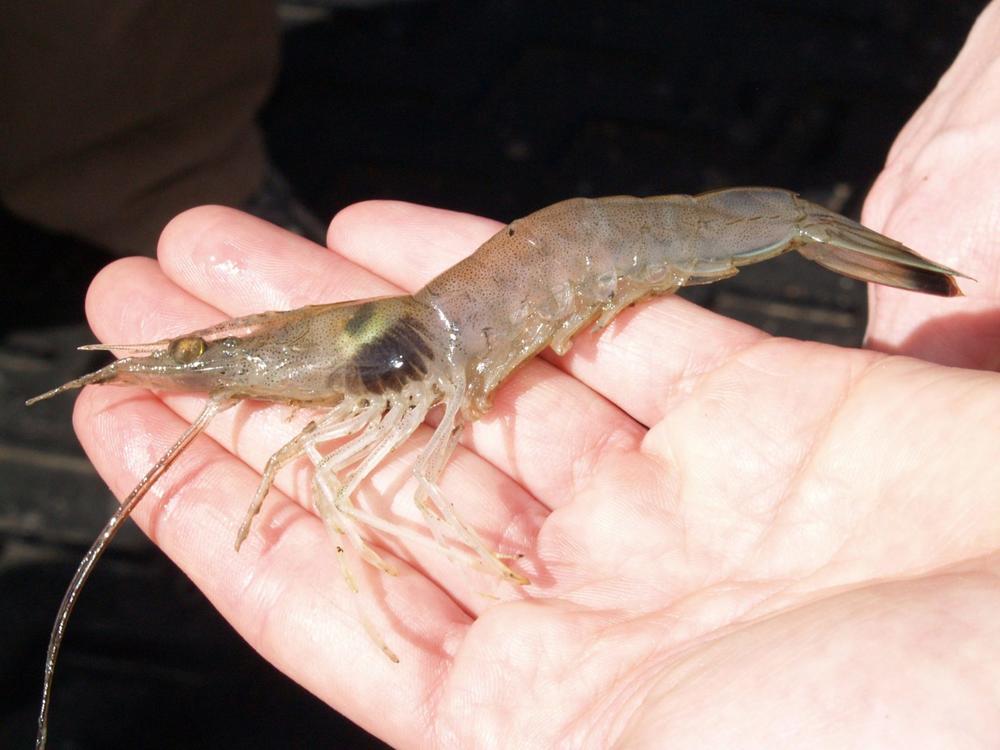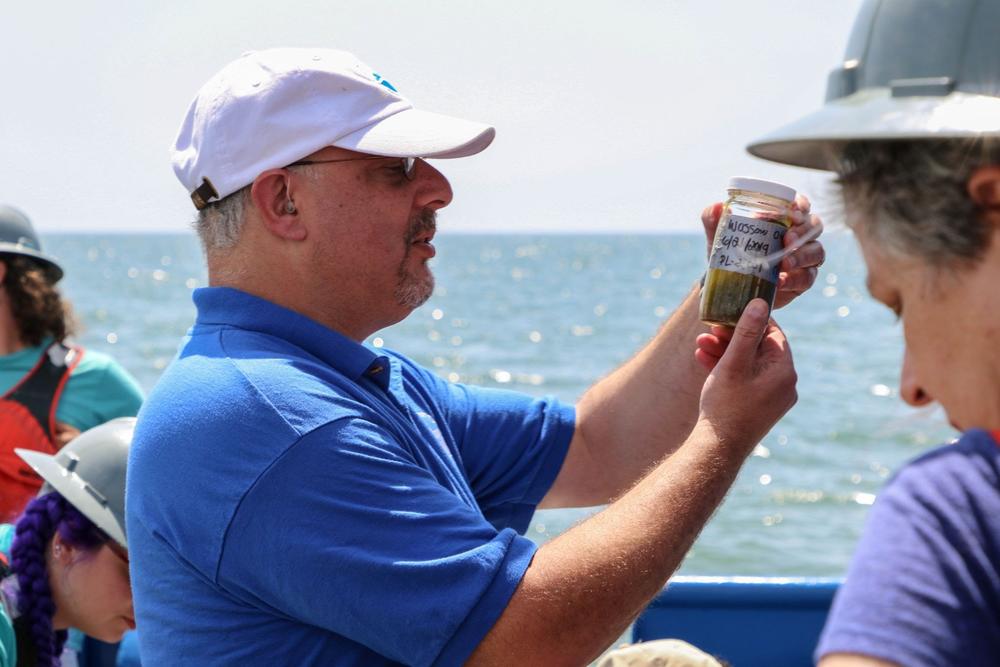
Section Branding
Header Content
Research Connects Black Gill In Shrimp To Warming Climate
Primary Content

Mary Landers, The Current
Shrimpers Jonathan Bennett and his grandfather Johnny “John Boy” Bennett had a good haul aboard the elder man’s trawler the Dora F. out of Brunswick on Monday.
“We went out there and just made a day trip,” said Jonathan, 24. “And I think we had 400 and something pounds for just one little short drag.”
A pretty good haul this year to shrimpers like the Bennetts means fewer cases of the parasitic shrimp disease called black gill.
Black gill is harmless to people who consume shellfish but it makes life difficult for the businesses involved in Georgia’s $11.5 million shrimp industry. The black color comes from the shrimp’s immune response to the parasite, which decreases the harvest. It likely kills some shrimp outright and then slows down others enough to make them susceptible to non-human predators, who also like to dine on these little morsels.
“This is probably one of the best years we’ve had in the last four or five years,” said the younger Bennett, who captains the Flying Cloud. “There’s still black in them, but it’s kind of splotchy. It’s every now and then. Out of 10 shrimp you might have three or four; the next time, you might have six. It just depends on kind of, you know, I really don’t even know. It’s just a lot better than it was.”
Looking for answers
Nobody really knows exactly what’s going on with black gill. But researchers at the UGA Skidaway Institute of Oceanography led by Marc Frischer have learned a lot over the last few years about the parasite that causes black gill and the conditions that allow it to thrive.
Shrimpers first started noticing black gill in Georgia shrimp around the mid ‘90s. When Frischer began studying the disease around 2013 he noticed it had the hallmarks of an invasive species.
“Just based on the prevalence of the visible symptoms, it was first noted in ‘96. And then it wasn’t there for two years. And then it was there in ‘98. And then it went; it wasn’t there in ‘99. And then it was there in 2000-2001, and so on. And that’s very characteristic of what an invasive species does. When you get some source of it coming, and it comes in, and it doesn’t quite make it that year, but the source is still there, and next year, it comes in again.”
But with more information, including pinpointing the parasite causing the disease and naming it, Frischer changed his mind. He now thinks it’s been here a long time but wasn’t as obvious.

“You catch 10,000 shrimp in one net trawl and two or three of them have darkened gills, no one’s gonna notice that.” Frischer said.
The parasite is a ciliate called Hyalophysa lynni, named for a Canadian biologist, Denis Lynn, a “ciliate guru” and who died in 2018. Frischer and a group of scientists including Skidaway colleagues Dick Lee and Tina Walters and lead author Stephen Landers of Troy University published their identification of the species in a paper published in January 2020 in the European Journal of Protistology.
The fact that it’s a separate species means it’s old, at least 40 million years old, Frischer said, and has likely been in Georgia waters a long time. After the researchers figured out its complicated life cycle and looked for it up and down the coast, they found it living in an area stretching from the Chesapeake Bay to the Gulf of Mexico and just about everywhere in between except the southern tip of Florida.
“When we started really looking, when we developed some more sophisticated diagnostic technology, and started looking at geographic ranges and where it is, it didn’t at all look like it came in from somewhere,” Frischer said. “It was too widespread, too even everywhere.”
Increased prevalence parallel to changes
The scientific studies now indicate that black gill’s increasing prevalence is a consequence of a warming climate, Frischer said.
“Really, everything is connected to climate, it’s our life support system on our planet,” Frischer said. “So we should expect these kinds of changes, but it’s very difficult to predict what those are going to be. So this is one nobody would have ever thought about. But it seems to be — it’s not proven — but it seems likely that climate is involved somehow in the emergence of black gill.”
The bottom line? The black gill parasite isn’t a new organism, it’s a new problem.
“The working hypothesis now is it’s been around for a very long time,” Frischer said. “But it has never been problematic until our climate has begun to change.”
Learning to live with problem
For shrimpers, that means black gill is another challenge for this traditional, coastal industry.
“When I got here they were still talking about it as something we can get rid of, and obviously we can’t or to our knowledge we can’t,” said Bryan Fluech. He’s the associate marine director at Marine Extension and Georgia Sea Grant, a position he’s held for six years.
Instead commercial shrimpers have had to learn to deal with black gill. Frischer’s research has included yearly “black gill cruises” that get lab and field researchers together on the water with working shrimpers to share knowledge and concerns. The 2020 and 2021 cruises were suspended because of the pandemic.
The science could hold some hope for shrimpers.
Frischer said there seems to be a pattern of warm winters that predict a lot of black gill and a poor catch the following fall. It’s an observation that may allow shrimpers to gear up properly for a big season or spare their money and effort in the event of a poor season.
“We might not be able to do anything about this problem,” Frischer said. “But if we could provide better predictions, the shrimpers wouldn’t get fooled by that. And they could gauge their efforts relative to what they projected their profits to be.”
This story comes to GPB through a reporting partnership with The Current, an independent, in-depth and investigative journalism website for Coastal Georgia.

